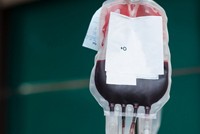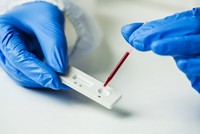Advertisement
Grab your lab coat. Let's get started
Welcome!
Welcome!
Create an account below to get 6 C&EN articles per month, receive newsletters and more - all free.
It seems this is your first time logging in online. Please enter the following information to continue.
As an ACS member you automatically get access to this site. All we need is few more details to create your reading experience.
Not you? Sign in with a different account.
Not you? Sign in with a different account.
ERROR 1
ERROR 1
ERROR 2
ERROR 2
ERROR 2
ERROR 2
ERROR 2
Password and Confirm password must match.
If you have an ACS member number, please enter it here so we can link this account to your membership. (optional)
ERROR 2
ACS values your privacy. By submitting your information, you are gaining access to C&EN and subscribing to our weekly newsletter. We use the information you provide to make your reading experience better, and we will never sell your data to third party members.
Biological Chemistry
Biomarker Associations Often Overestimated
Most reported biomarkers proposed to diagnose disease or monitor treatment don’t live up to their initial billing
by Celia Henry Arnaud
June 6, 2011
| A version of this story appeared in
Volume 89, Issue 23
Most biomarkers reported as potential determinants of disease risk, disease progression, or response to treatment don’t live up to their billing as originally reported, according to a statistical analysis (J. Am. Med. Assoc., DOI: 10.1001/jama.2011.713). John P. A. Ioannidis of Stanford University School of Medicine and Orestis A. Panagiotou of the University of Ioannina School of Medicine, in Greece, examined 35 highly cited biomarker associations to find out whether the reported size of each effect was accurate. They selected studies from 24 high-profile journals that indicated a relative risk in their abstract and had been cited at least 400 times. For 86% of the biomarkers, the effect reported in the most highly cited study for each biomarker was greater than that reported in larger follow-up studies. For 83% of the biomarkers, the most highly cited paper found a greater effect than was reported in a corresponding meta-analysis. Because many of these most highly cited studies were among the early reports of a particular association, Ioannidis and Panagiotou suggest that exaggerated effects could be the result of the small scale of the initial studies.





Join the conversation
Contact the reporter
Submit a Letter to the Editor for publication
Engage with us on Twitter